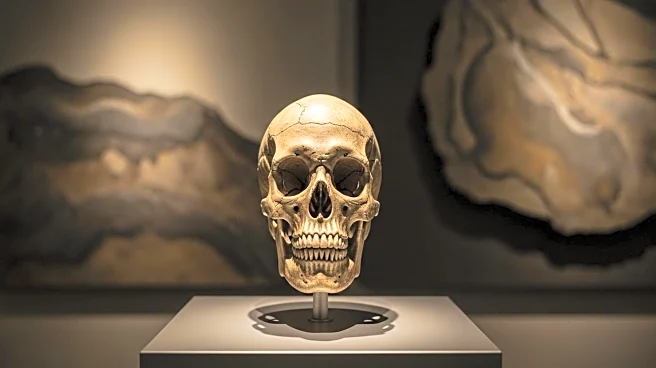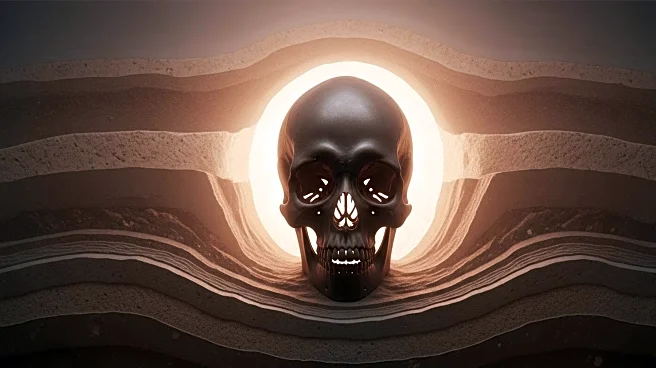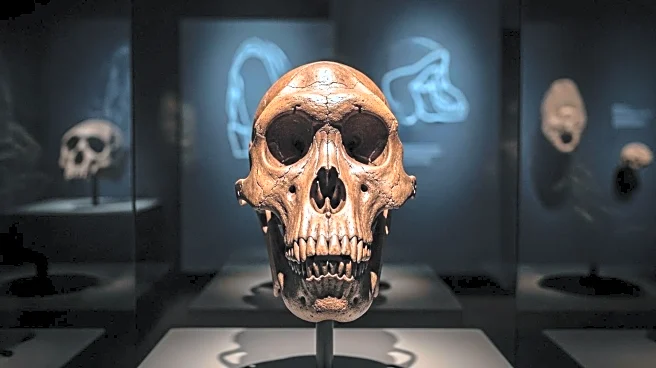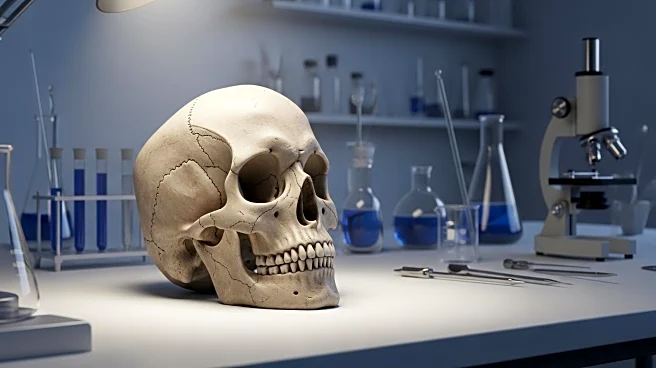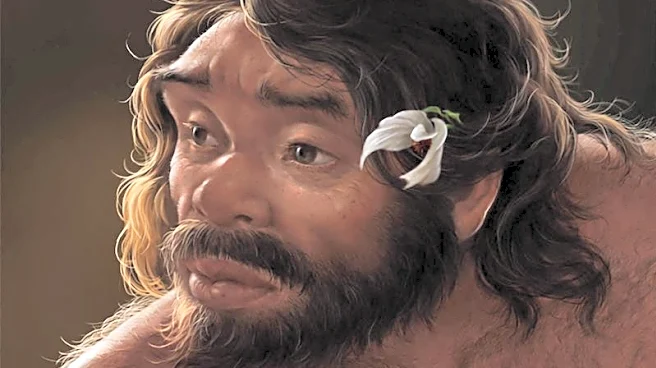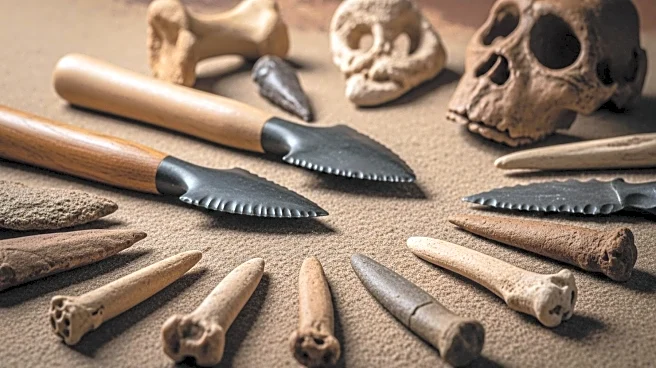What's Happening?
Researchers have successfully reconstructed a 1 million-year-old human skull discovered in China, potentially belonging to a relative of the Denisovans. The Yunxian 2 skull, excavated in 1990 from Hubei province, was initially thought to be from Homo erectus. However, new analysis suggests it is more closely related to 'Dragon Man' and Denisovans. The reconstruction, achieved through CT scans, revealed unique traits such as a large cranial capacity and narrow space between eye sockets, indicative of the Homo longi clade. This clade, which includes Denisovans, lasted over a million years alongside Neanderthal and Homo sapiens lineages.
Why It's Important?
The reconstruction of the Yunxian 2 skull provides significant insights into the rapid evolution of Homo sapiens in Asia. Understanding the divergence of human lineages, such as Neanderthals and Denisovans, helps researchers trace the evolutionary history and adaptations of ancient human groups. This study suggests a rapid diversification among these groups, potentially influenced by environmental factors like severe cold events. Such findings can reshape our understanding of human evolution and the factors that drove the development of diverse physical traits in ancient populations.
What's Next?
Researchers aim to explore earlier periods to identify factors that may have triggered human evolution. The study suggests that environmental changes, such as cold events, could have catalyzed evolutionary and behavioral changes, including extinctions. Further research may focus on these periods to understand the impact of environmental factors on human evolution.
Beyond the Headlines
The study highlights the importance of isolated populations adapting to diverse paleoenvironments, which may have contributed to the rapid diversification of human groups. This research underscores the complexity of human evolution and the interplay between environmental factors and genetic adaptations.

